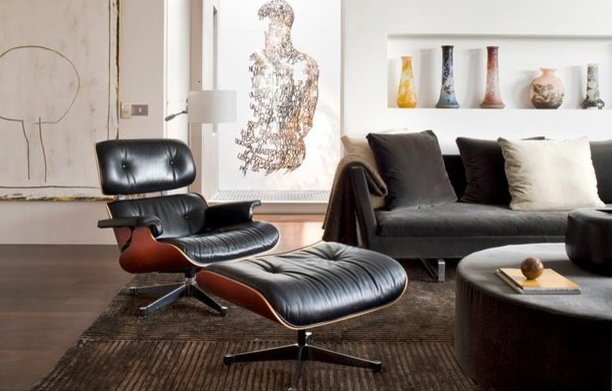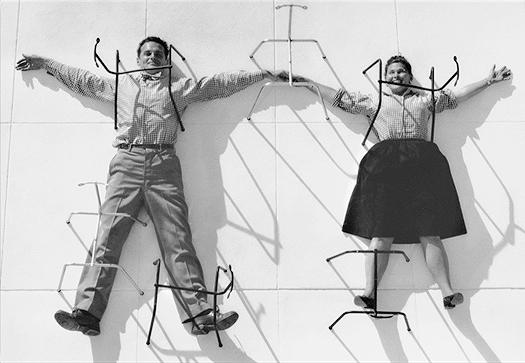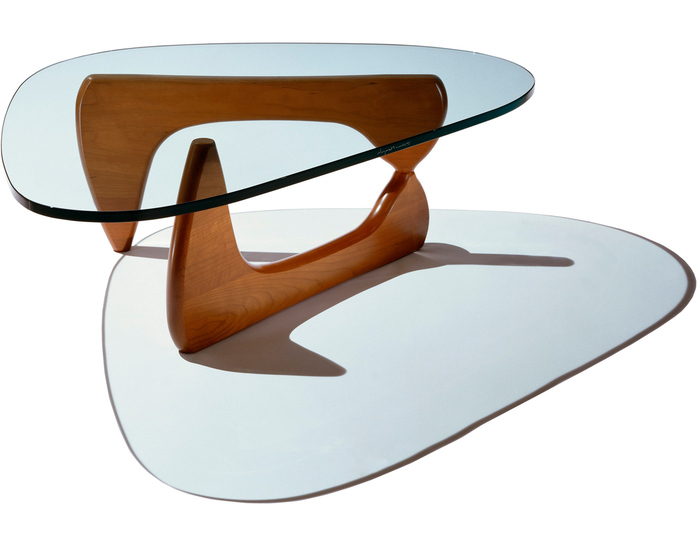A brief history of three modern designs that brought a new consciousness to form and function.
Design not only shapes the way we live but it inspires a type of living that is intentional and meaningful. In this article we will look at three designed objects that have changed the way we encounter and interact with our world. These three icons, the Eames Lounge Chair, The Noguchi Table, and the Gyrofocus by Dominque Imbert, feel as fresh and relevant as the day they were created, proving once more, truly great design never falls out of fashion.
The Eames Lounge Chair

The Eames Lounge Chair and Ottoman
Every time you sit in a molded chair that curves around and holds the contours of your body you have Ray and Charles Eames to thank. In a time when wooden chairs were made primarily of straight lines and near right-angles, this design duo thought of the revolutionary idea to use molded plywood and truly consider the ergonomics of sitting. It would be years later until the couple would come up with the most iconic chair of the Mid Century Modern era, the Eames Lounge Chair.
Though the Eames Lounge Chair and Ottoman employed the same molded plywood as their previous furniture designs, Arlene Francis called it “quite a departure” when it debuted on her popular Home Show in 1956. Indeed, the lounge set came about during a period of very spare and minimal furniture, but Charles was insistent on building a chair with “the warm receptive look of a well-used first baseman’s mitt,” one that would provide respite from the “strains of modern living.” (1)
The Eames Lounge Chair holds up today as a marvel of modern design, comfort and sophistication. Ray and Charles Eames, already world famous designers at the time, entered into the realm of icons when they dared to perfect the humble art of sitting.

Ray and Charles Eames
The Noguchi Table
It has been described as two canoes gliding across placid water. It has been described as a haiku, perfect in its elegant simplicity. It has been described as harmony composed of two pieces of wood and a sheet of glass. However, The Noguchi Table is not something to be described, it is indeed, something to be experienced.

“The first prototype of what is now known as the Noguchi Table was created with a slab of found glass and carefully sculpted, individual wood pieces. The themes of reflection, nature and deep peace were taken from Noguchi’s own experiences and an organic, physical connection to the world of design and sculpture.” (2)
Noguchi may have set out to create a table but in fact, his table has created a new way to look at the furniture with which we surround ourselves. Its three-point stance can hold a stack of books as sturdy as it can hold the collective imagination of anyone in its presence.

Isamu Noguchi
Dominique Imbert: Gyrofocus
Dominique Imbert, a true Renaissance Man and the creator of Focus Fires, was born in Montpellier in the south of France in 1940. After studying literature in London and Paris, he became, ‘by accident’, as he puts it, an ethnologist in Alaska and an assistant chef in Manhattan, before being awarded a Doctorate in Sociology and becoming a history professor in Paris. After teaching for four years, he decided he preferred shaping metal to molding young minds so he gave up the blackboard for an anvil and a welding torch.

Gyrofocus by Focus Fires
The origin of his most iconic design dates back to 1967. It was cold in the south of France and Dominique Imbert was restoring a ruined farmhouse, stone by stone, in the village of Viols-le-Fort. In order to stay warm while he worked, he forged his first fireplace out of salvaged scraps of metal. What resulted was a smoldering smile of iron hanging from the sky: the first Focus was born. A year later, this first fireplace would give rise to a second, which was revolutionary in every sense of the word. As with its predecessor, the fireplace was suspended, but this time the hearth could pivot 360° to face any direction. Several enthusiastic friends wanted their own ‘rotating hearth’ – gyrofocus in Latin. And thus began the history of Focus and its iconic Gyrofocus fireplace. (3)
The Gyrofocus is in every way an original. It was the first suspended fireplace and while other designers have tried to capture it’s essence over the years, none can match its attention to detail or perfection of form. It is a sculpture that hangs from the sky and the perfect container for the beauty and mystery of fire.
The Gyrofocus is available for purchase in North America through European Home. Click here to find a local dealer.

From left to right: Dominique Imbert + The first Gyrofocus Install (1968) + Modern Fabrication in France
Sources:
1. Dwell Magazine
2. Herman Miller
3. Focus Fires
Posted by: Cory John Ploessl
Cory is the Marketing Manager for European Home. He has an MFA in Sculpture from the Massachusetts College of Art and Design in Boston. He writes about fireplace and modern design on the European Home Blog.
Disqus comments will appear here